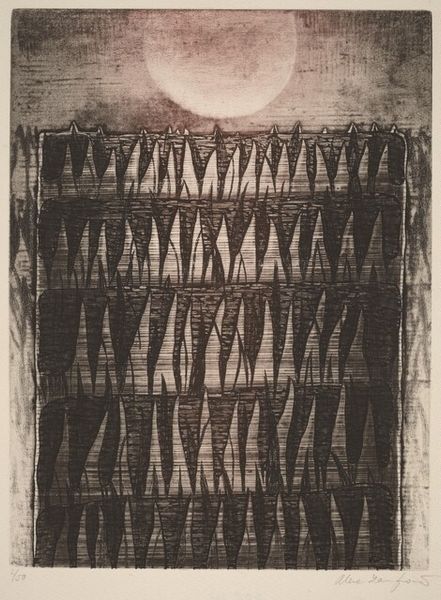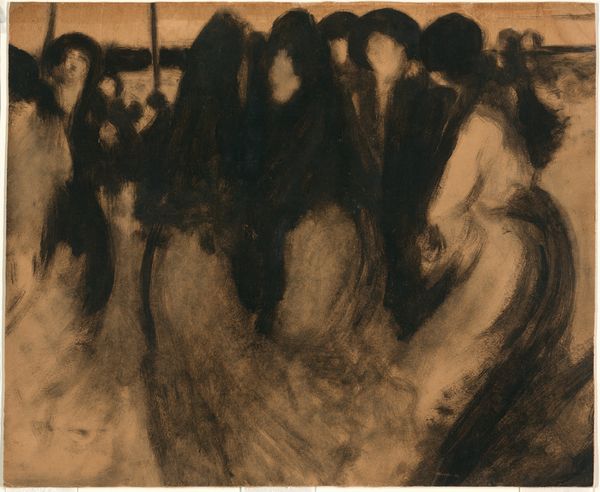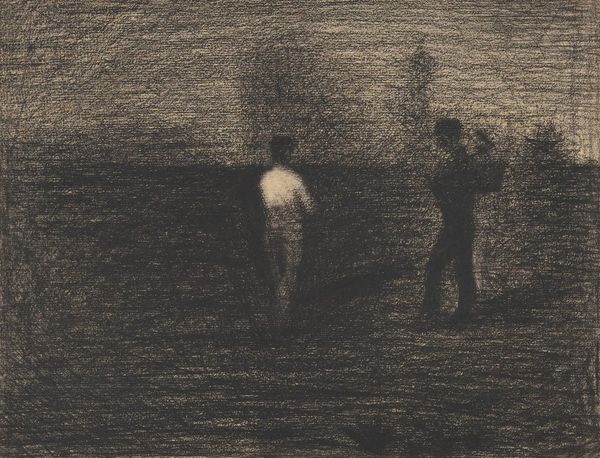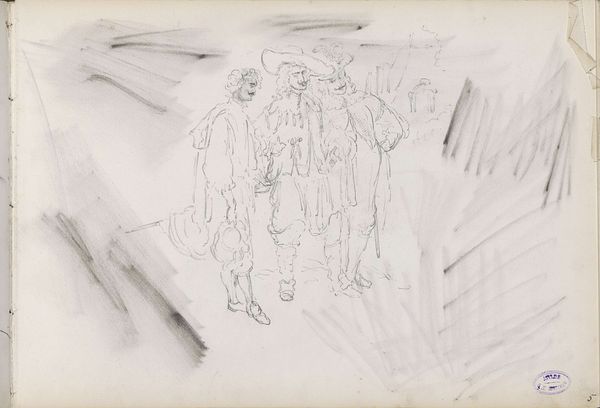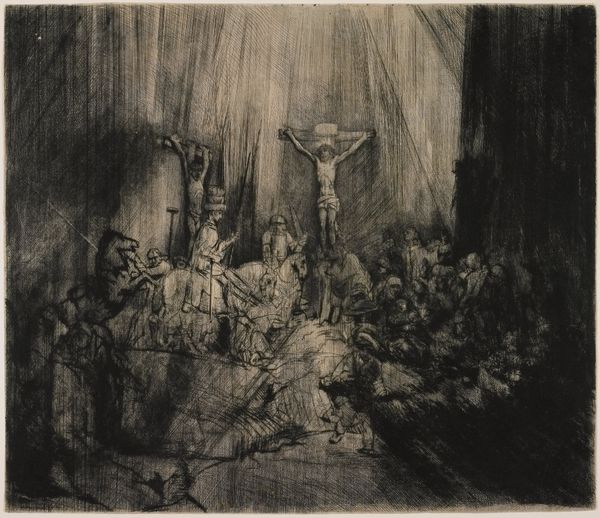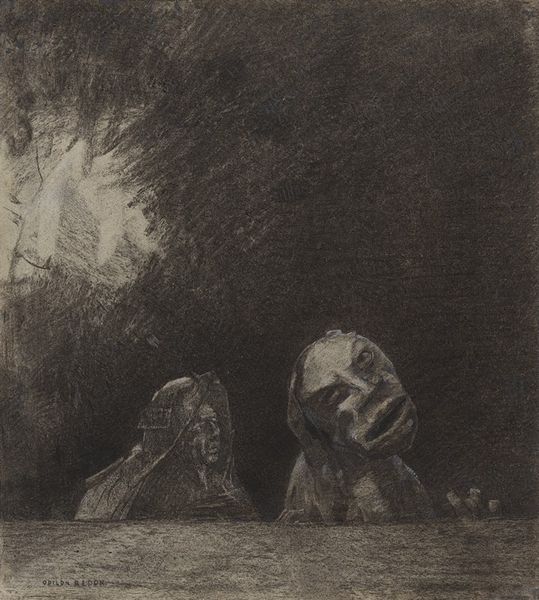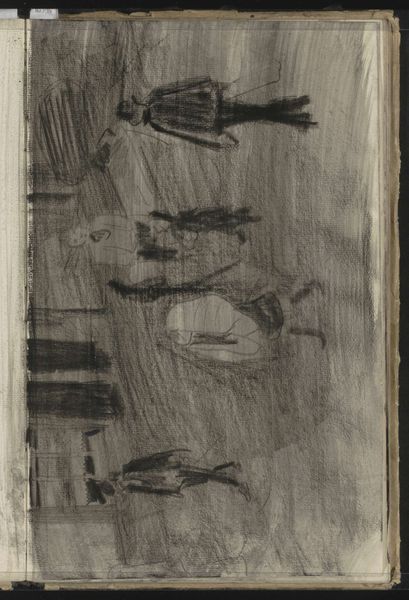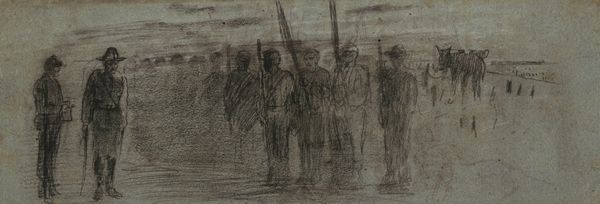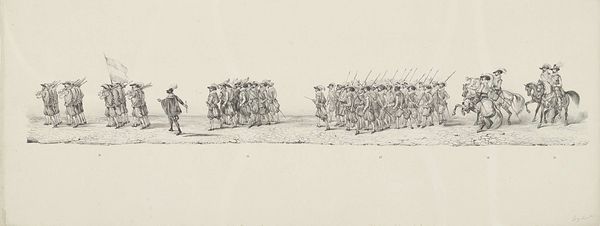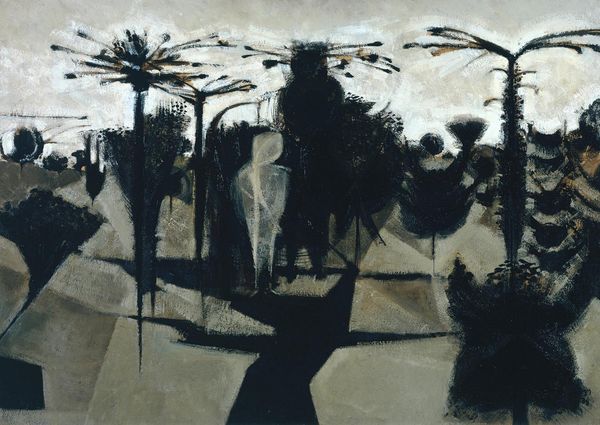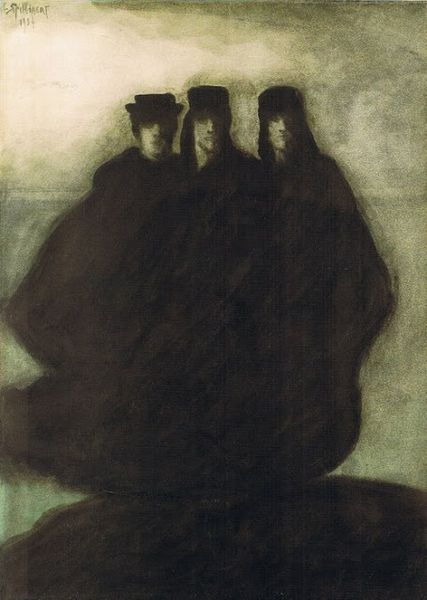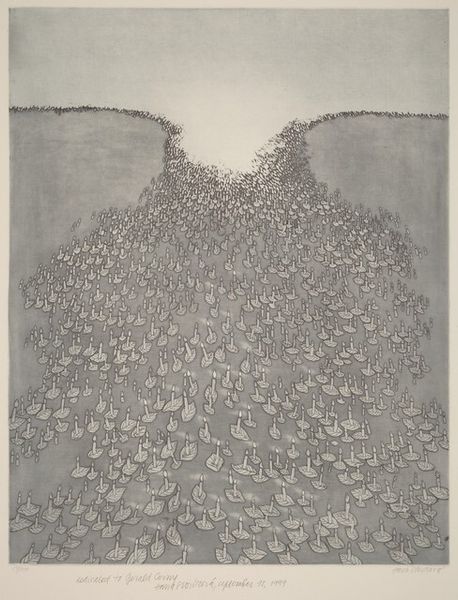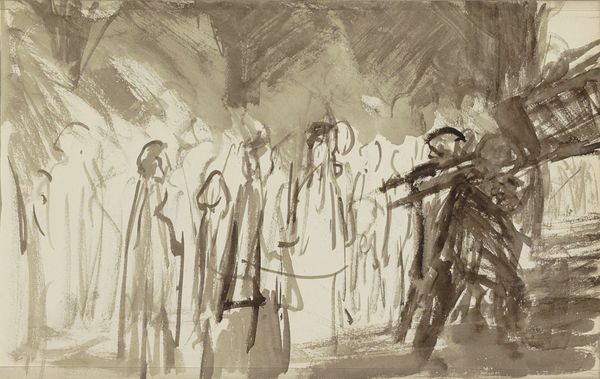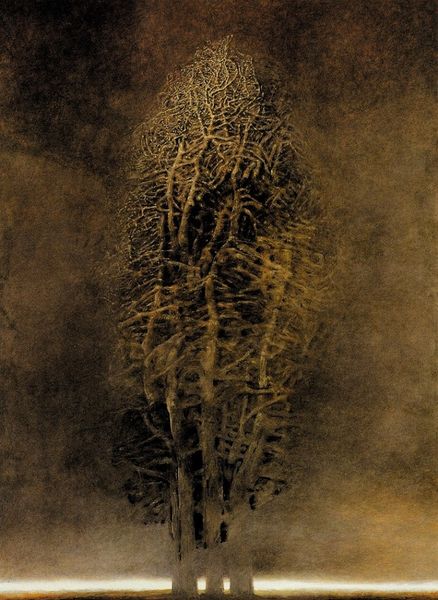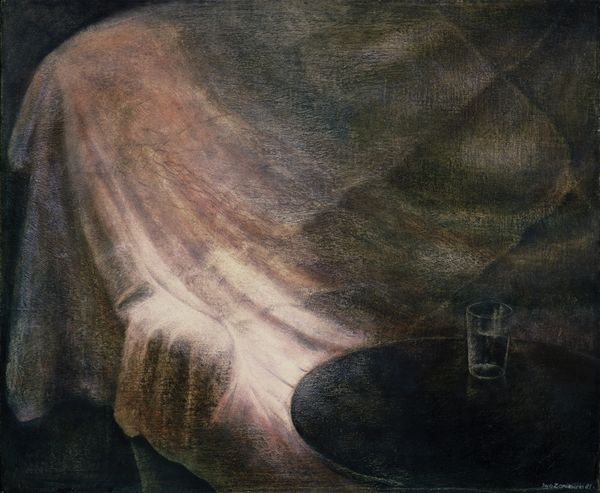
#
amateur sketch
#
natural shape and form
#
pencil sketch
#
sculpture
#
incomplete sketchy
#
charcoal drawing
#
possibly oil pastel
#
charcoal art
#
carved into stone
#
charcoal
Copyright: Public domain US
Curator: Here we have Alfred Kubin’s "Black Mass," created around 1905, a work rendered primarily in charcoal. What’s your initial take? Editor: Bleak. Visually oppressive. It's a somber procession—feels like a ritual in the making. The limited tonal range amplifies the unease. I wonder what material realities contributed to the mood captured here. Curator: Well, the title itself provides a clue. Kubin was deeply fascinated by occult themes, so the procession is indeed the central symbolic event. These figures are cloaked, anonymous—carrying torches, perhaps? What could these figures tell us? Editor: Considering Kubin's context—early 20th century, growing industrialization—I wonder if the anonymity itself isn't part of the point. Masses of workers, depersonalized labor. The charcoal itself, a byproduct of burning, speaks to an era fueled by combustion, extraction, and social unease. Did he source his materials locally? Was charcoal readily available? These considerations always provide added texture to analysis. Curator: An interesting proposition, viewing the charcoal itself as symbolic of broader societal processes! For me, it calls upon religious structures turned on their head. The 'black mass' as a symbol of inverted power, a subversion of established hierarchies. Editor: It is compelling, however, that we might see it more literally - What did mass production mean to artmaking? Were industrial processes a way of expanding on creating? Could this possibly be something other than charcoal we are seeing, possibly oil pastels? This creates questions in my mind. Curator: A challenge to traditional academic approaches? Perhaps. It certainly embodies that fin-de-siècle anxiety, that feeling of societal decay and impending doom so prevalent at the time. Thanks for providing an alternative point of view, it does well to challenge and invite consideration beyond art history itself! Editor: Absolutely. For me, examining art through a material and social lens illuminates hidden narratives. I am glad you felt invited to contemplate beyond face value, that is how dialogue flourishes.
Comments
No comments
Be the first to comment and join the conversation on the ultimate creative platform.
